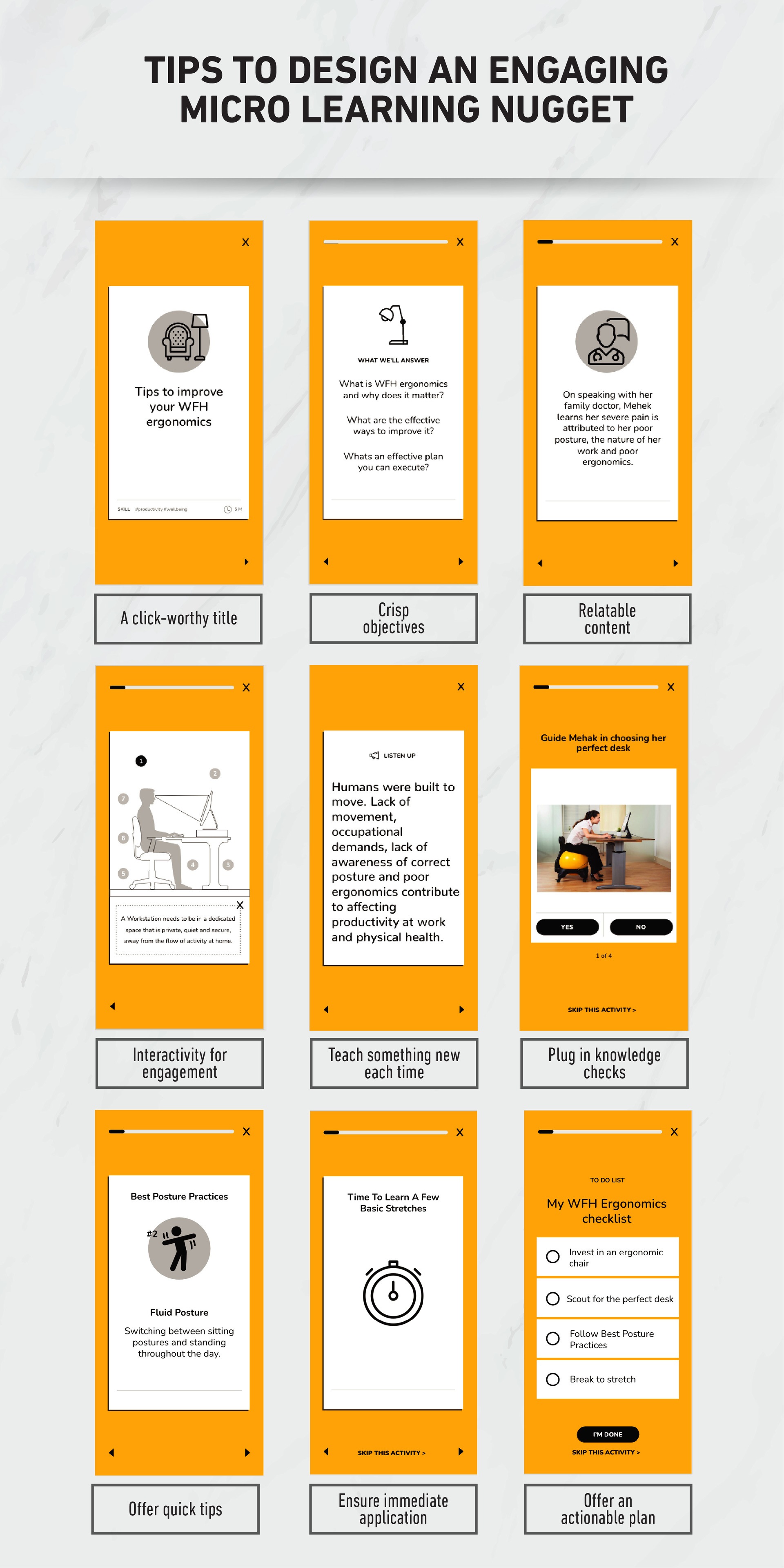Here Is Why Microlearning Is Beneficial
Micro training offers short bursts of information for learners based on a single learning outcome. Content can take many forms, from text to full-blown interactive multimedia, but should always be short. Microlearning is flexible and a very effective form of training. It can be implemented in various ways to amplify employee and organizational performance. It can be standalone or part of a blended curriculum. It is the best way to offer learning at the moment of need.

What Is Microlearning Not?
Microlearning is not limited to video content and cannot completely replace eLearning. It is not just squeezing content to make mini-courses. It is not the same as mLearning or mobile learning. However, microlearning can be delivered on mobile devices and mobile learning can have micro modules.
When To Use It
Microlearning is used to tackle simple, specific ideas/topics/objectives and to cater to busy employees or customers. It is ideal for just-in-time learning and is meant for mobile learners.
When Not To Use It
Do not use microlearning to tackle complex ideas/topics/objectives or to execute deep learning or subject mastery. Microlearning should not be used to replace eLearning or in-person training.
4 Key Benefits Of Microlearning To Your Organization
1. It Has A Better Transfer Of Knowledge To The Job
The objective of any Learning and Development initiative is to help employees grow and improve their performance. This can best happen when they are able to transfer what they have learnt to their job. Given that microlearning has small chunks of information, employees can better retain information and apply the concepts directly in their job. Microlearning helps employees understand the concept better as it is directly mapped to an outcome linked to their job. Due to the short duration of microlearning, employees can also access the course at any point in time to refresh their memory.
2. It’s Less Expensive
A microlearning course is much cheaper to create and deploy when compared with other forms of eLearning content creation. It takes fewer resources and Instructional Designers to develop a microlearning course. A team that’s well-versed in creating custom content will be best positioned to help streamline this for you. A specialized microlearning content creator will make the process much easier.
3. It’s More Engaging
As microlearning is targeted to a specific outcome and is shorter in nature, it fares high on employee engagement levels. Microlearning courses are usually no longer than five minutes, and thus employees don’t feel the fatigue factor of going through longer courses. Employees can go through the courses quickly, understand, and move on. When employees are able to finish a training module quickly and acquire the required skills, it helps drive motivation levels.
4. It’s Faster And Easier To Deliver
As a microlearning course takes less time to create, it lets organizations respond faster to changing business goals and cater to new training demands. Organizations that are looking for quick wins and want to train their employees on new features of their products or services, or want to train their salesforce about a negotiation tactic, can benefit from deploying microlearning. Organizations can also easily update any changes that they wish to make in the courses after a few months of deployment. Organizations need to engage the right partner to develop these short learning nuggets.

Tips to remember when designing a microlearning course:
- Define the audience. Be a part of their lives and understand how they would best utilize microlearning.
- Keep it short. Get to the point quickly and don’t go beyond five minutes. It is "microlearning" after all.
- Include interactive content to increase engagement levels.
- Limit the frequency to one lesson a day. This will impact the learning success rates. The web-based word game Wordle is hugely successful for this very reason.
- Help your employees develop a habit of learning. Offer them something new and fresh each time they come to you.
- Create conversational content. Completion rates tend to be better when your employees relate to the content.
- Connect the next microlearning nugget with the previous nugget. This increases memory recall between lessons.
Summing It Up
There you go! Now you know what microlearning is, what it isn’t, and when to use it, how to design it, and most importantly, the benefits it offers to the organization. Deploy with the right partner to learn big in small doses.










